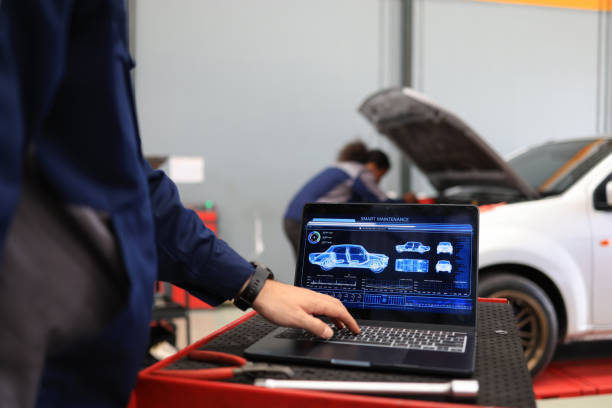
We’ve all been there – the dreaded moment when you turn the key and hear nothing but a feeble click. A dead car battery can happen unexpectedly, leaving you stranded and frustrated. However, with a set of jumper cables and a willing helper, jumpstarting a car is a relatively straightforward process that can get you back on the road in no time.
Safety First: Before You Begin
Safety should always be your top priority when jumpstarting a car. Park the working vehicle (the one providing the jump) close enough to the dead car so that the jumper cables can reach both batteries without stretching. Turn off the ignition and all electrical components in both cars, such as headlights, radios, and air conditioners. Additionally, make sure the cars are in “Park” (for automatic transmissions) or neutral (for manual transmissions) and engage the parking brakes.
Inspect the Batteries: Identifying Positive and Negative Terminals
Pop the hoods of both cars and visually inspect the batteries. Identify the positive (+) and negative (-) terminals. They are usually marked with red and black covers, respectively. It’s crucial to ensure that the jumper cables are correctly connected to these terminals to avoid damage to the vehicles or, in extreme cases, injury.
Positioning the Cars: Positive to Positive, Negative to Ground
Connect one end of the red (positive) jumper cable to the positive terminal of the dead battery. Then, connect the other end of the red cable to the positive terminal of the working battery. Next, connect one end of the black (negative) jumper cable to the negative terminal of the working battery. Finally, connect the other end of the black cable to an unpainted metal surface on the dead car – this can be a bolt or a metal bracket away from the battery. This step is crucial to reduce the risk of sparks near the potentially explosive hydrogen gas emitted by a battery.
Starting the Cars: Patience is Key
Start the working vehicle and let it run for a few minutes. This allows the dead battery to charge slightly. Afterward, attempt to start the car with the dead battery. If it starts, let both cars run for a few more minutes to further charge the dead battery. If the dead car doesn’t start after a few attempts, there may be more significant issues, and professional assistance may be required.
Disconnecting the Cables: Reverse Order
Once the dead car is successfully started, it’s time to disconnect the jumper cables. However, it’s crucial to do so in the reverse order of how they were connected. Start by removing the black cable from the unpainted metal surface on the previously dead car. Then, remove the black cable from the working car’s negative terminal, followed by the red cable from both cars. Be careful not to let the cable ends touch each other or any metal surfaces.
Conclusion
Jumpstarting a car is a valuable skill that every driver should know. Whether you’re helping a stranded friend or finding yourself in need of a jump, following these steps ensures a safe and effective jumpstart. Remember, while jumpstarting can revive a dead battery, it’s essential to address the underlying issues that caused the battery to die in the first place. Regular battery maintenance and inspections can help prevent inconvenient breakdowns and keep your vehicle running smoothly.